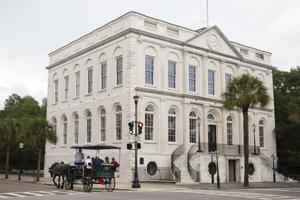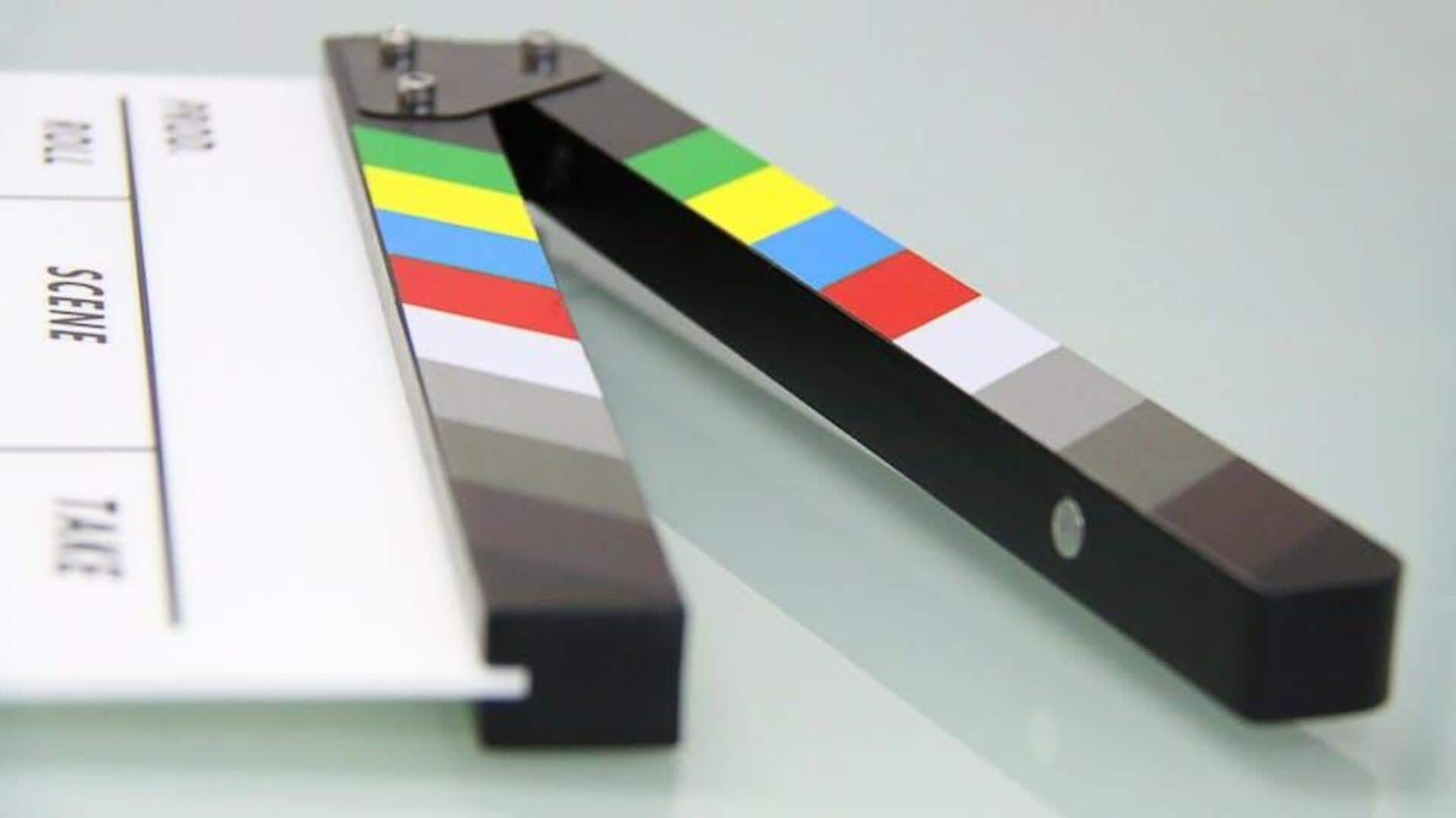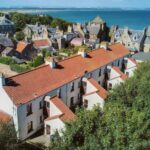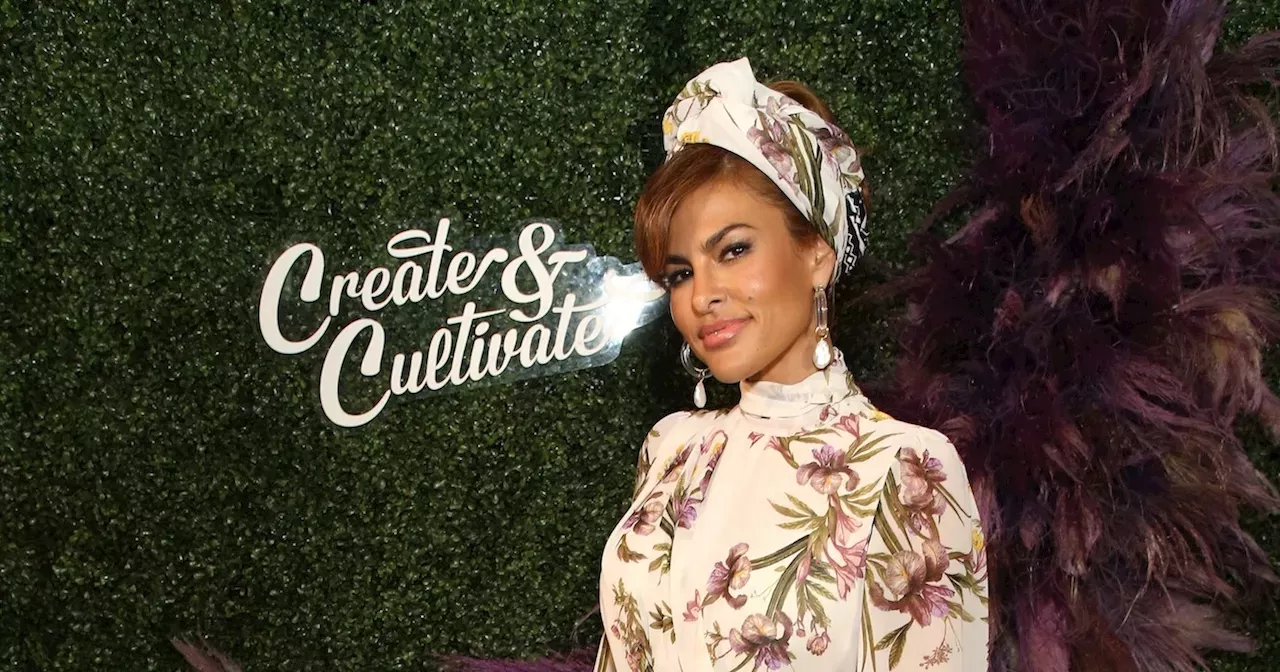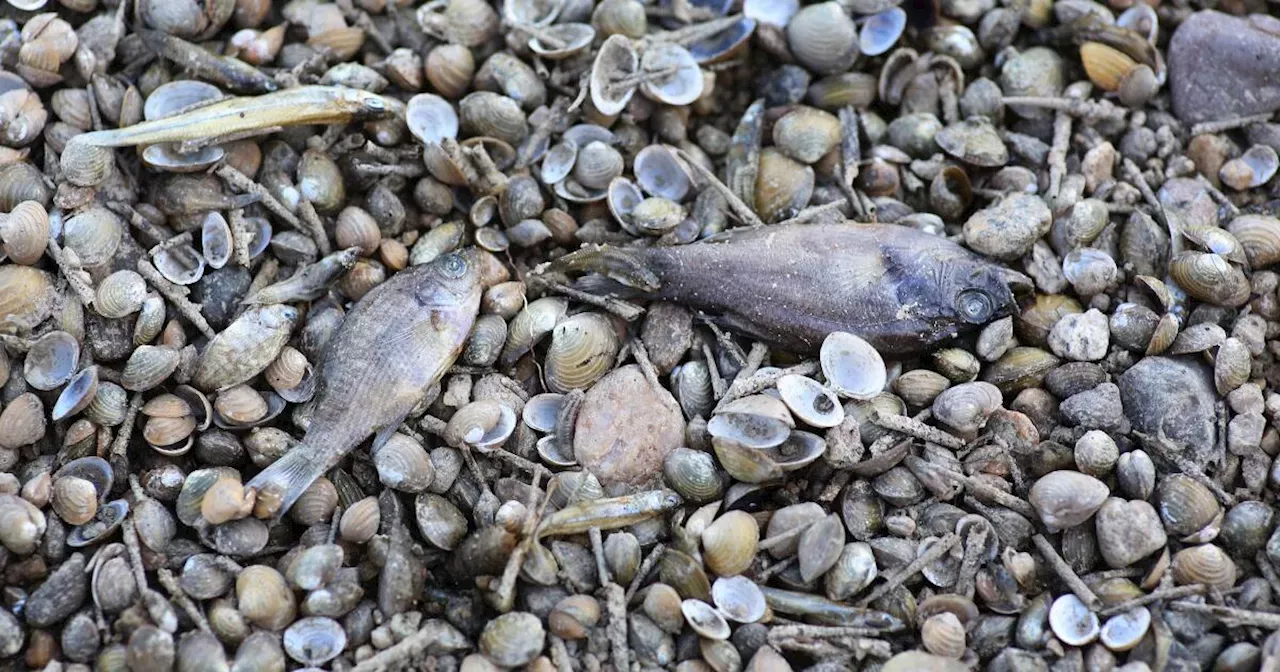Charleston City Hall’s Council Chamber is the second oldest in the nation to have remained in continuous use. The room is beautiful, with antebellum chandeliers, circa 1896 Thomas Edison light bulbs (that were used until 1983), an ornate cast-iron railing surrounding the gallery and a hand-painted tin ceiling. Its wood-paneled walls are filled with art, including a life-sized portrait of President George Washington painted in 1792 by John Trumbull (1756-1843).
Story continues below Upon closer inspection, the observant viewer quickly realizes the painting offers a distinctly unique perspective: Washington’s horse, whose hind end is prominently displayed with its tail raised, appears as if it is about to drop a big load of manure upon the Charleston city skyline seen beneath its back legs. (Insert audible gasp here.) A painting of President George Washington at the city of Charleston by John Trumbull.

Did the artist mean it as an insult to the city? Some kind of joke? For years tour guides and docents have claimed Trumbull meant it as a snub because a city representative rejected his first painting. Yet research by Dr. Nicholas Butler, historian with the Charleston County Public Library , suggests the story might not be so simple.
Charlestonians were wildly excited about Washington’s 1791 visit to the Holy City, crowding bunting-lined streets, cheering his arrival and staging nightly balls in his honor. Following his visit, S.C.
congressman William Loughton Smith on behalf of City Council asked Trumbull to commemorate the visit by commissioning a portrait of the president. Trumbull was a widely respected artist around the time of the American Revolution, and he painted many of its heroes, including several portraits of Washington. Happily accepting Smith’s commission, Trumbull painted Washington as he appeared before the 1777 Battle of Princeton — in full uniform, a telescope in one hand, a sword at the ready in the other.
Behind him, his gray horse, Blueskin, rears in anticipation of the coming battle, and in the distance one can just make out the American flag flying in the encampment outside Trenton, N.J. In his 1841 memoir, Trumbull described the painting as “the best certainly of those which I painted, and the best, in my estimation, which exists, in his heroic military character.
” Nevertheless, Smith rejected the painting. Trumbull’s memoir continues: “But it did not meet the views of Mr. Smith.
He admired it, he was personally pleased, but he thought the city would be better satisfied with a more matter-of-fact likeness, such as they had recently seen him — calm, tranquil, peaceful.” Smith asked Trumbull to paint a new portrait, this time with Charleston as the setting. Trumbull agreed and donated the original portrait to the Society of Cincinnati, which later donated it to Yale University, where it hangs today.
Was Trumbull angered by Smith’s rejection of his first painting? Nothing in his letters to Smith, the president or others indicate any hard feelings. Smith and Trumbull had been friends before the painting’s commission and by all accounts remained so afterward. Indeed, Smith later commissioned Trumbull to paint his own likeness.
The second portrait shows the president standing at Haddrell’s Point in Mount Pleasant with a view of East Bay’s waterfront. In very similar attire (except that the buttons on his jacket are unexplainably backward), Washington casually holds a walking stick in his right hand and his hat in his left, which rests on a sheathed sword by his side, indeed a more “calm, tranquil and peaceful” attitude, clearly set in Charleston. Yet popular legend maintains that Trumbull was secretly miffed about the rejection of his first portrait, so after sending the second portrait to City Council for approval, which it received, Trumbull said he would deliver the portrait as soon as he completed a few final details.
(Perhaps he then went back and sketched the horse in the posture previously described?) Butler’s research found no documentation to support this theory, though he notes nearly all the city’s records, which might have included a bill of sale or council minutes, were destroyed in the fires, destruction, looting and chaos that ensued when the city fell to Federal troops in 1865. Any minutes from 1792 were undoubtedly destroyed long ago, along with documentation of when and with what comments council accepted the new portrait. We’ll undoubtedly never know if the horse’s keester was added by a miffed artist or if the city’s fathers just missed the proverbial bigger picture when they accepted it.
Mayor John Tecklenburg at Charleston City Hall on Jan. 3, 2024. The portrait of President George Washington can be seen front and center.
Historian T.H. Breen, a Northwestern University professor and expert on the American Revolution, shares Butler’s caution that no documentation confirms that City Council was displeased with the second portrait, nor that Trumbull ever expressed any enmity about having his first effort rejected.
Documentation aside, however, Breen concludes: “But just look at it.”.
